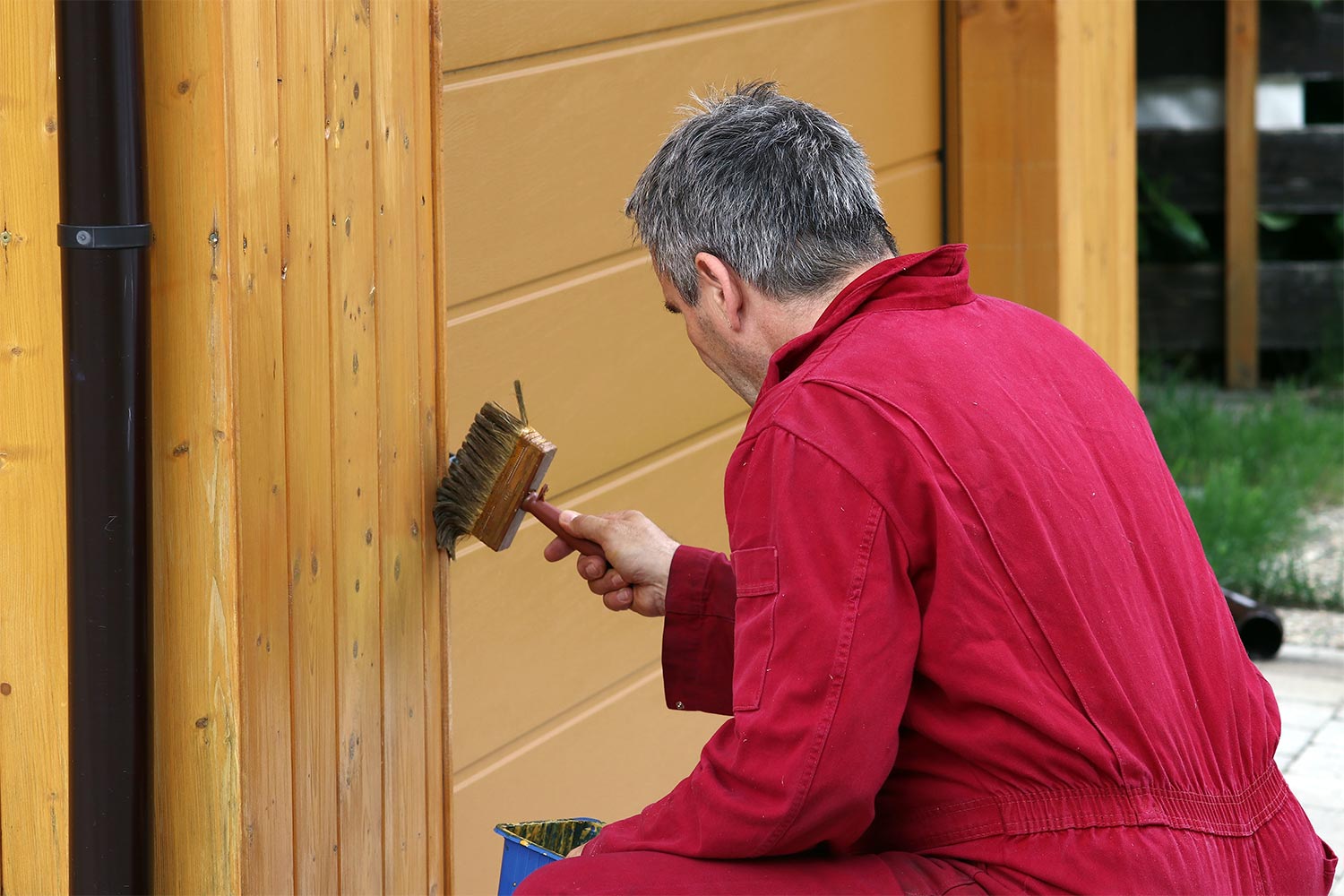8 Garage Door Painting Tips to Make Your Space Shine
Painting a garage door can be tricky, but these tips will make it easier


Painting a garage door requires some special care compared to just any old painting job. You have to consider the weather before you paint, and painting a vinyl garage door requires different types of paint and primer than wood or metal doors. With so many factors to keep in mind, these eight tips for painting a garage door can help make things easier.
1. Choose the Right Paint for the Job
There are many different types of garage doors and materials, but if you decide to paint your door, you need to find the best paint so it adheres properly.
Aluminum doors: For aluminum doors, choose acrylic paint, which will cost about $30 to $50 per gallon.
Steel doors: Go with latex- or oil-based paint for steel garage doors. Latex paints cost about $30 to $50 per gallon, and oil-based paint typically costs $40 to $70.
Wood doors: Like steel doors, latex- or oil-based paint work best for wood garage doors.
Vinyl doors: Vinyl doors with a plastic top layer require a latex-based primer and paint with a bonding agent. Latex-based primer will cost about $20 per gallon, and exterior paint with a bonding agent costs about $40 to $60 per gallon.
All types of doors: Regardless of what kind of paint you choose, make sure it is suited for exterior surfaces. Paints formulated for exterior use can withstand rain, wind, snow, and harsh sunlight better than interior paints. Interior paints may chip, fade, or even bleed when misused for outdoor projects.
2. Plan for the Weather
Before you start painting the garage door, be sure to look at the weather and plan for three to five days of sunshine and minimal chance of rain.
Aim for days that are not too hot or cold, about 50 to 80 degrees Fahrenheit.
Opt for a day with the smallest chance of rain or storms.
Keep humidity in mind, and try to plan your project when there is low humidity in your area.
3. Clean and Sand the Garage Door
You’ll want fresh coats of paint to adhere to the door and go on smoothly, so it’s important to make sure any old, chipping paint, debris, or rust are taken care of before you start painting.
Scrape away any rusted spots on the door.
Sand the door for an even surface for maximum paint adhesion.
Power wash the door to remove any dirt, dust, or other debris to prevent these particles from creating a bumpy paint application.
4. Let Primer and Paint Dry Completely
Just as you should remove dirt and rust for an even paint application, you should also let the paint dry completely for the same reason. Applying fresh paint on top of wet paint may lead to smudges, drips, or streaks.
After applying primer, let it dry for 12 hours before adding the first coat of paint.
Make sure each subsequent layer of paint (typically one or two coats will do the trick) dries completely before adding the next coat. This process typically takes eight to 12 hours per layer of paint.
5. Use Long, Slow Paint Strokes

It might be tempting to paint quickly to give your door plenty of time to dry, but longer, slower paint strokes are the key to a smooth surface. Painting this way helps prevent streaks.
6. Find the Right Brush for Each Garage Door Section
For garage doors that feature recessed panels or varying textures, you’ll want to use different types of paint brushes for each of these areas for maximum coverage and a seamless paint job.
Large, flat sections: Use a small paint roller for large, flat areas of the garage door.
Textured sections or recessed panels: These sections have many nooks and crannies that a roller brush won’t adequately cover. Use a paintbrush for these sections.
7. Paint Recessed Individual Squares First and In Order
Many garage doors feature recessed panels, and you should focus on these first before painting larger sections. This way, you can keep track of which recessed panels need to be painted and how many coats of paint they have. Plus, if any paint smudges or drips as you paint these areas, you can quickly clean it up with the small paint roller afterward.
8. Turn Off the Garage Door Opener
Even if you remind your family that you’re spending the weekend repainting the garage door, they might still accidentally hit the remote out of habit. To prevent this from happening, disengage automatic openers and remotes so the door doesn’t open while you’re painting. Just remember to turn the openers and remotes back on once the paint is fully dry.





- How to Paint a Door and Give It New Life
- Best Paint for Garage Doors: The Pros and Cons of 3 Top Options
- 10 Common Painting Mistakes Homeowners Should Avoid
- When Is the Best Time to Paint Your Garage Floor?
- How Long Does Paint Last, and How Can You Tell If It’s Expired?
- 11 Painting Tips and Techniques for Your Home Painting Project
- How Long Does Paint Take to Dry?
- When Is the Best Time to Paint Indoors? A Helpful Guide
- Essential Supplies to Paint a Room: What You Really Need
- When Is the Best Time to Paint Your House Exterior?










